The Rocky Road to Hampton Furnace
a 1500 hundred-year-old Lenni-Lenape midden, leaping lizards, and ruins in the Pines
As historians like to say, every tree in the Pine Barrens has been cut down three times, and they were fed into the many furnaces fired to make bog iron from the sandy muck, mulched for paper mills, or made into charcoal to fuel them and to keep homes warm. Martha’s Furnace, which I visited earlier, was one. Hampton was another.
Hampton was first the site of an iron furnace, and later a cranberry bog and sorting plant that made serious bank, so much that in 1916 the owners were ambushed in their car by a gang of robbers, and the ensuing gun battle left one dead and others injured in the harrowing escape. The site is a little tricky, despite being off a highway on Hampton Road. There are washouts, ruts, and potholes that make it a bouncy, precarious trip, but worth it to enjoy the views and absorb the history:
I followed the directions in Barbara Solem-Stull’s Ghost Towns and Other Quirky Places in the New Jersey Pine Barrens, which were easy enough. Be warned that many of the roads have deteriorated further since publication of this book. I’m looking into getting a fat tire bike for riding in the sugar sand, so I can get past washouts that can swallow Jeeps, much less my Subaru Outback. But that’s a purchase for the fall, not when tick season begins full bore in the pinelands.
Before I tackled Hampton, I drove to the Apple Pie Hill fire tower to see if it was manned so I could climb up and get a view. Unfortunately it wasn’t, so I doubled back down Ringler Road and headed toward the Shore, because I was so close to a site I’ve wanted to visit for years: the Lenni-Lenape Shell Mound in Tuckerton, off Seven Bridges Road.
I did meet an Eastern Fence Lizard at Apple Pie Hill:
The maps call it Great Bay Ave, but the locals call it Seven Bridges, even though it only has six. Number seven never got built. You can smell the sea as you approach the site of the Shell Mound, which is a short, muddy walk off the road. A twenty foot tall mound of oyster and clamshells used by the Lenni-Lenape, archaeologists found that the site is at least fifteen hundred years old and goes at least nineteen feet below the current ground level. We’ve wiped out so many traces of the First Nations that I try to visit any that I can in New Jersey, whether it’s petroglyphs carved into the rock or a trash pile overgrown with trees:
Wear boots if you want to approach it. I gave where this picture was taken, not because of the mud—I’ve got rubber floor mats—but because of the crunching. Those tiny specks in the mud are fiddler crabs, which scuttle and scurry through the swamp grass as you walk upon it. But not all of them make it. Crunch, crunch.
I was tired of wondering if the crunching beneath my boots was old shells or living things, and you’re not supposed to climb the midden anyway, so I enjoyed the salty air a while and tried to imagine a feast before colonists came and decided they wanted the land. Here’s a video of the little crabs fleeing my approach.
From there I headead to Hampton and pulled off the road and carefully made my way toward the furnace ruins. I had scoped out the path on Google Maps satellite view and also the incredible layers of topographical and historical maps at Boyds Maps, created by Boyd of the NJ Pine Barrens Forums. It’s a great resource for everyone who enjoys the Pinelands, and it showed me that I had at least three washouts to contend with. I got lucky that all three were on the clearing near the foundation of the packing house, so I could skirt around them and not learn how deep they are. This is the remains of an outbuilding on the village green. In the high grass around it on both sides of the road are cellar holes and a well, overgrown and difficult and dangerous to find.
Past the village, if you can skirt the washouts, there’s an earthen bridge over the Skit Branch, and a “raceway” or artficial stream used to turn a mill wheel, where the iron furnace once stood. Now all that’s left is a mound of iron slag overgrown and hard to pick out from its surroundings. But past it is the site of the cranberry packing house, built of Jersey sandstone and well-graffitoed by passersby, that was once four stories tall.
My car is parked behind it for scale. These ruins were more fun to walk through and explore. The road here eventually hooks up with Carranza Road, to the memorial to the fallen pilot and the ruins of the cranberry town of Friendship, which I visited and wrote about here. I wasn’t sure if the road was passable that way, and saw another washout not far up the trail, so I turned back after taking more photos.
The crabs made me hungry, so I stopped in Hammonton at the Tacos al Carbon food truck and had street tacos and horchata, perfect on a hot sunny day. Lengua, pastor, chorizo, carbon, one of each. And I could eat them outside. I stopped by Allen’s Clam Bar first, thinking about a fried clam po’boy, but they didn’t have outdoor seating, which was a waste of a fine day in my opinion.
I also stopped to take a photo of another local Muffler Man statue. I’m not sure what it is about old kitschy Americana like this that draws me. They are some of ‘50's America’s shell middens, the trash and decay of a bygone era, repurposed. It makes me believe we are transitioning to a post-fossil-fuel future on a widely habitable planet littered with archaeological relics of the Before Times, and not entering a slow apocalypse haunted by the mistakes of its past.
Addendum/Bibendum:
I changed the name of this newsletter from The Pine Baron to The Pine Bairn. My friend Kim suggested it because we both love wordplay, and I am much more of a bairn in the Pines than a Baron of them. I even got lost following the old stagecoach road from Phildelalphia to Egg Harbor last weekend. But that’s next week’s story.
Upcoming Adventures:
The Train Don’t Stop in Atsion No More
You Can’t Make it to Mount or Washington
Gabreil Davies and The Indian King
and one more photo for Weird NJ:




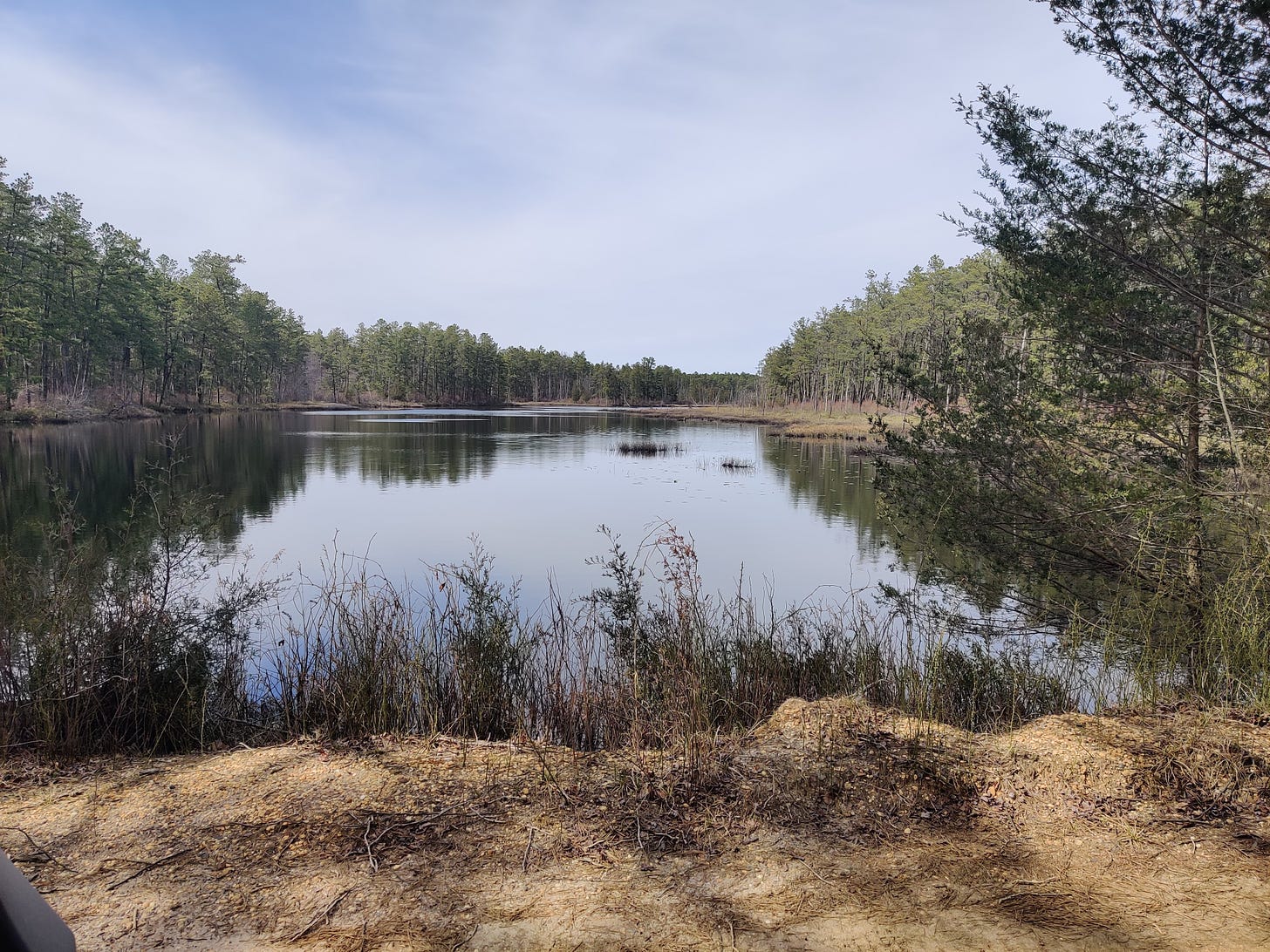
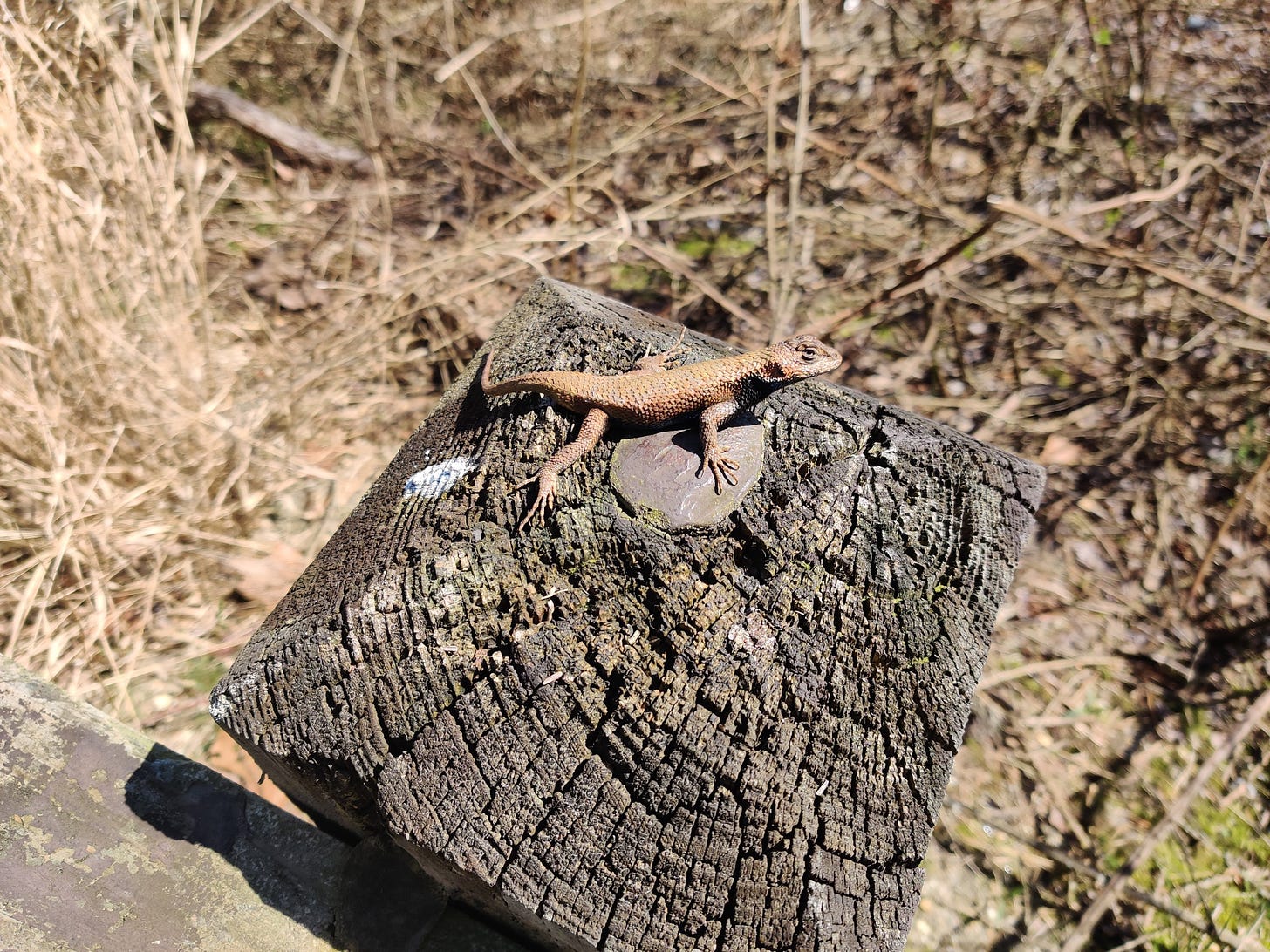
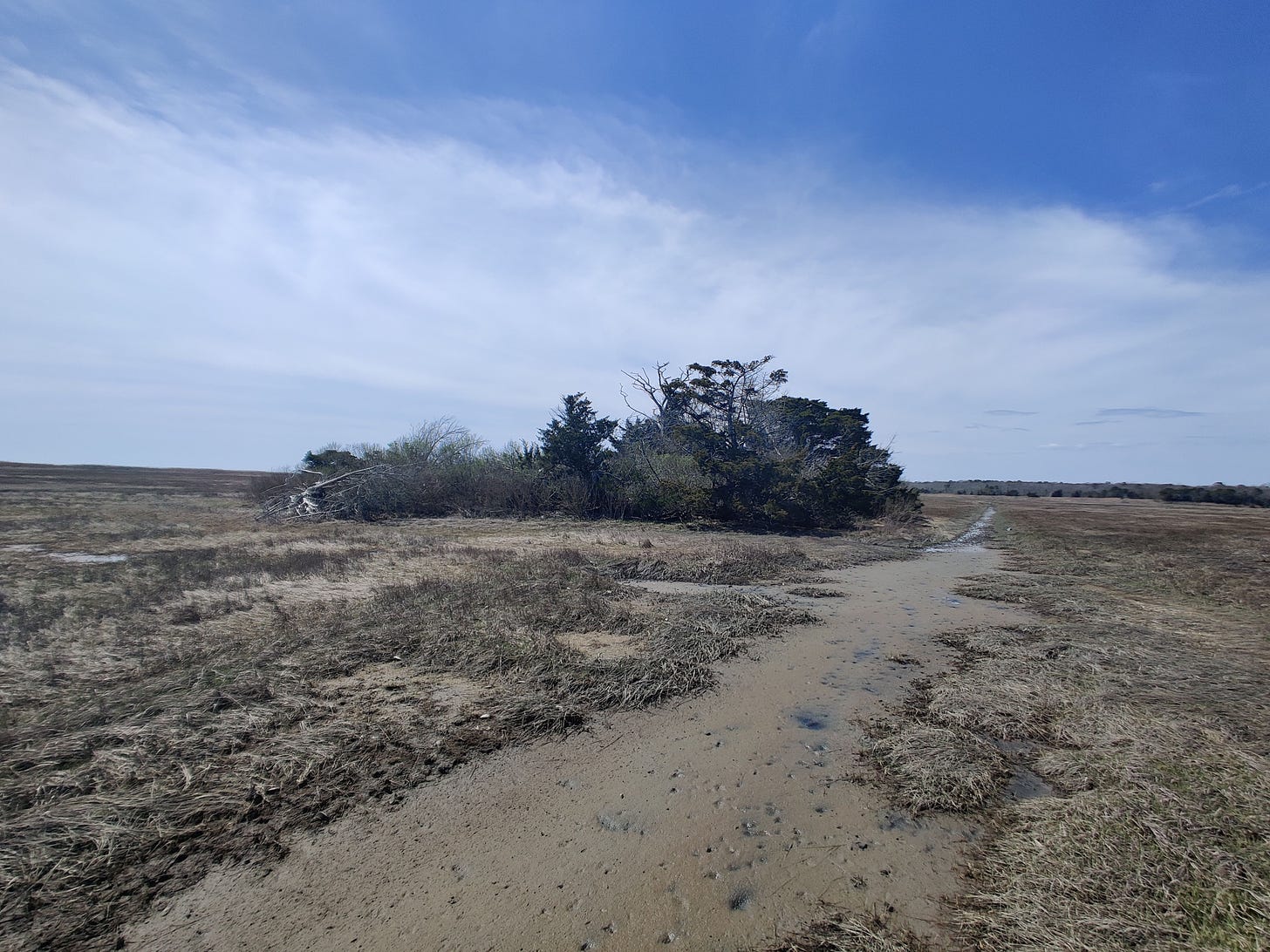
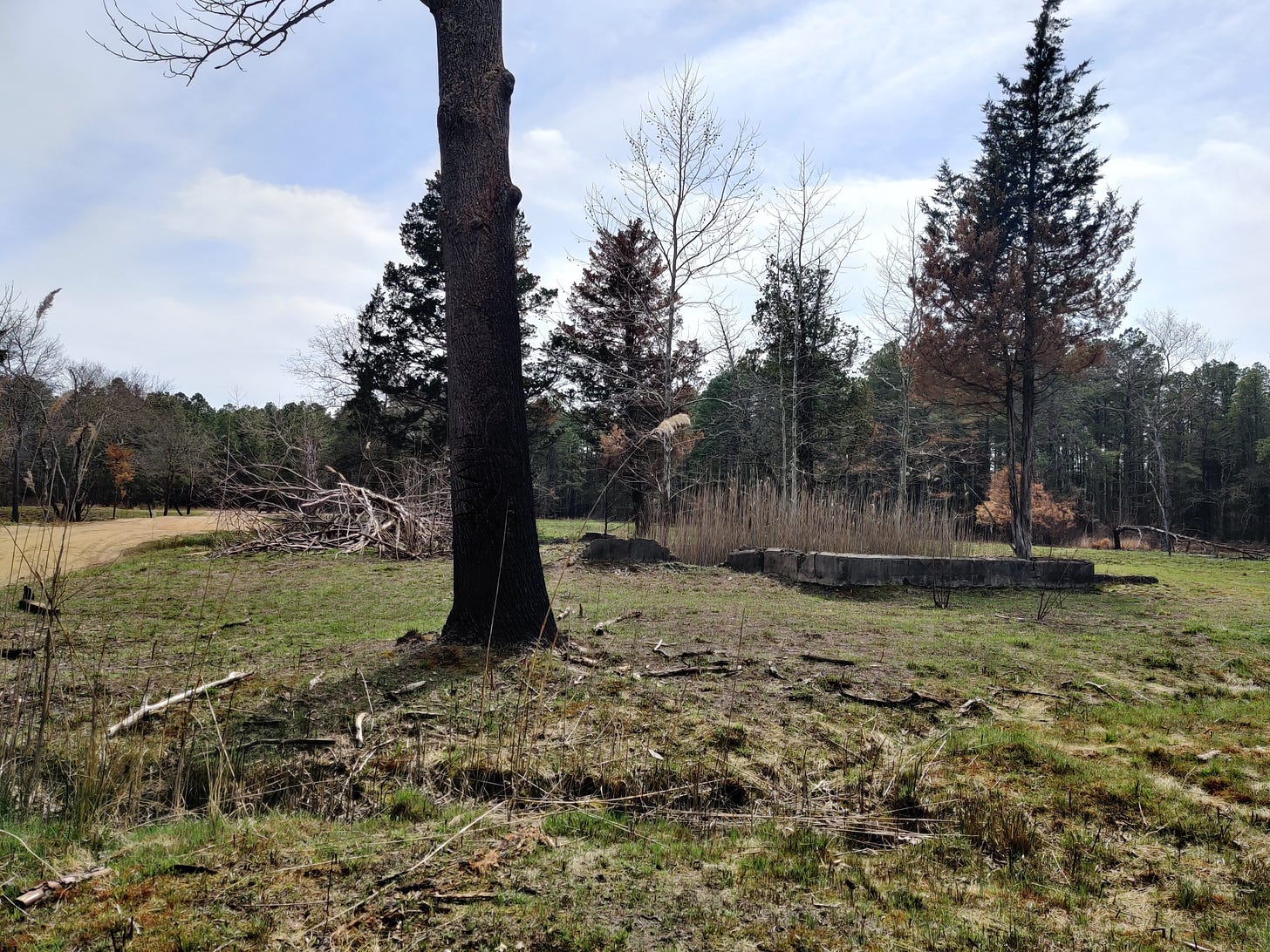

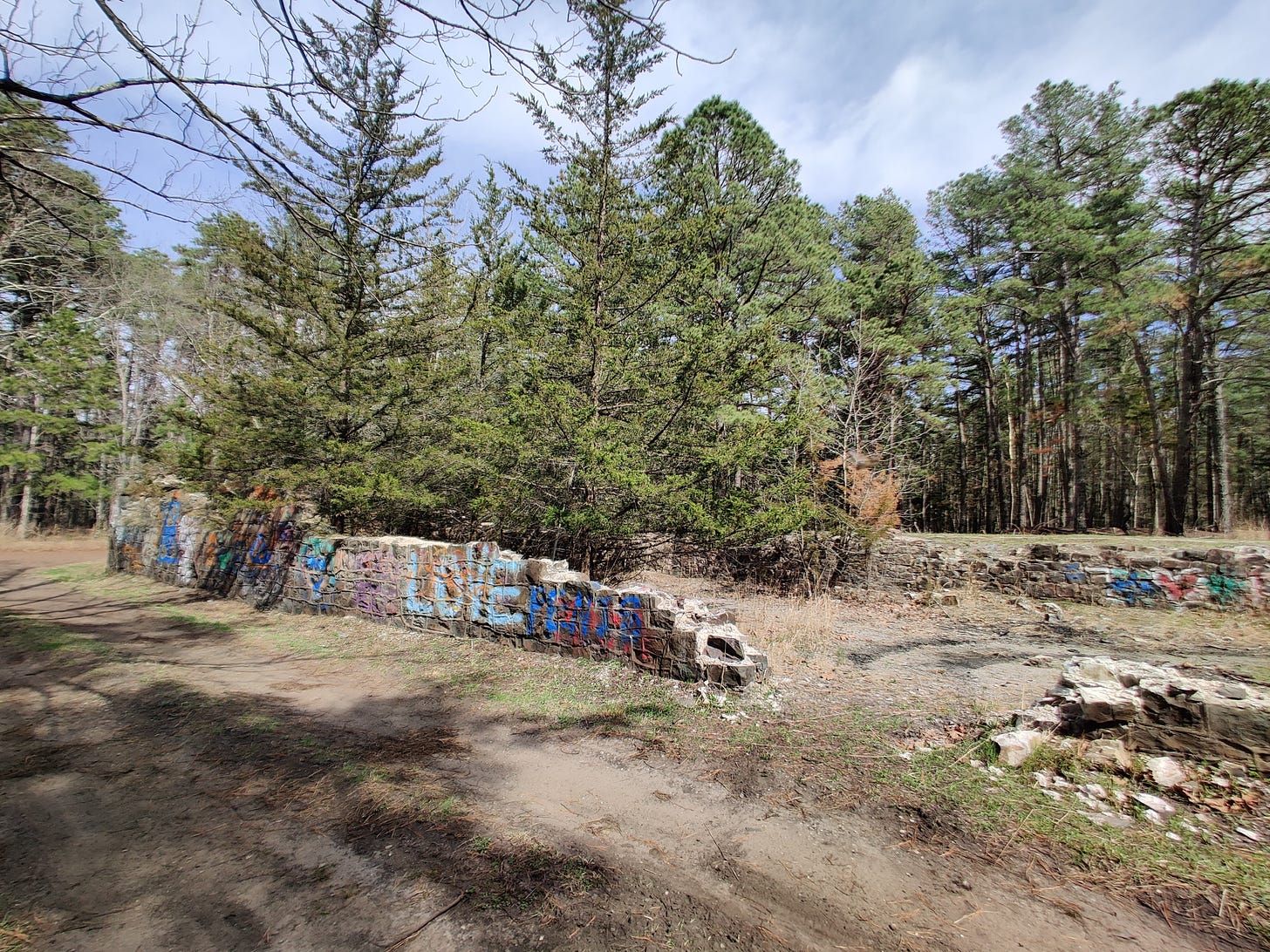

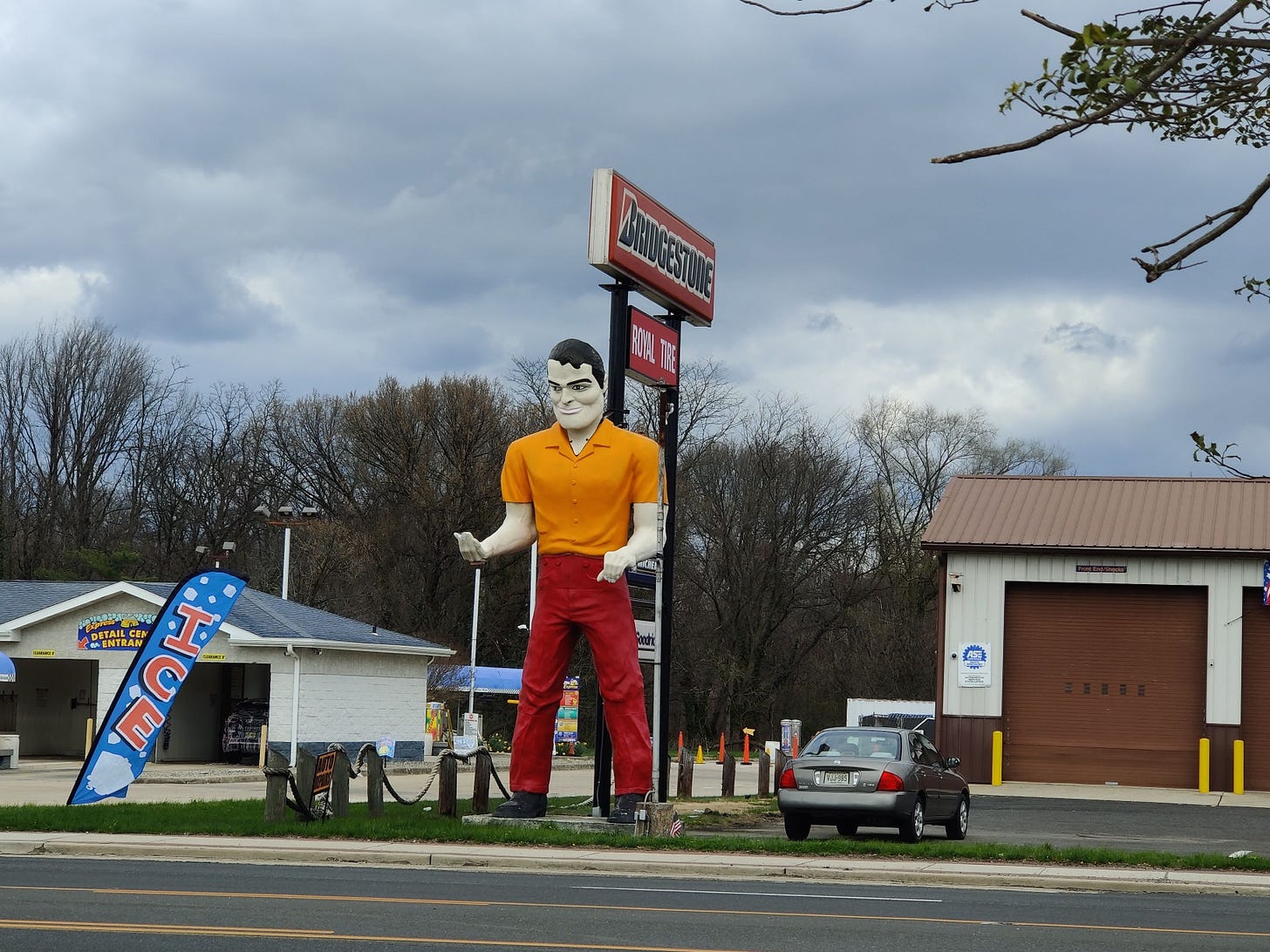
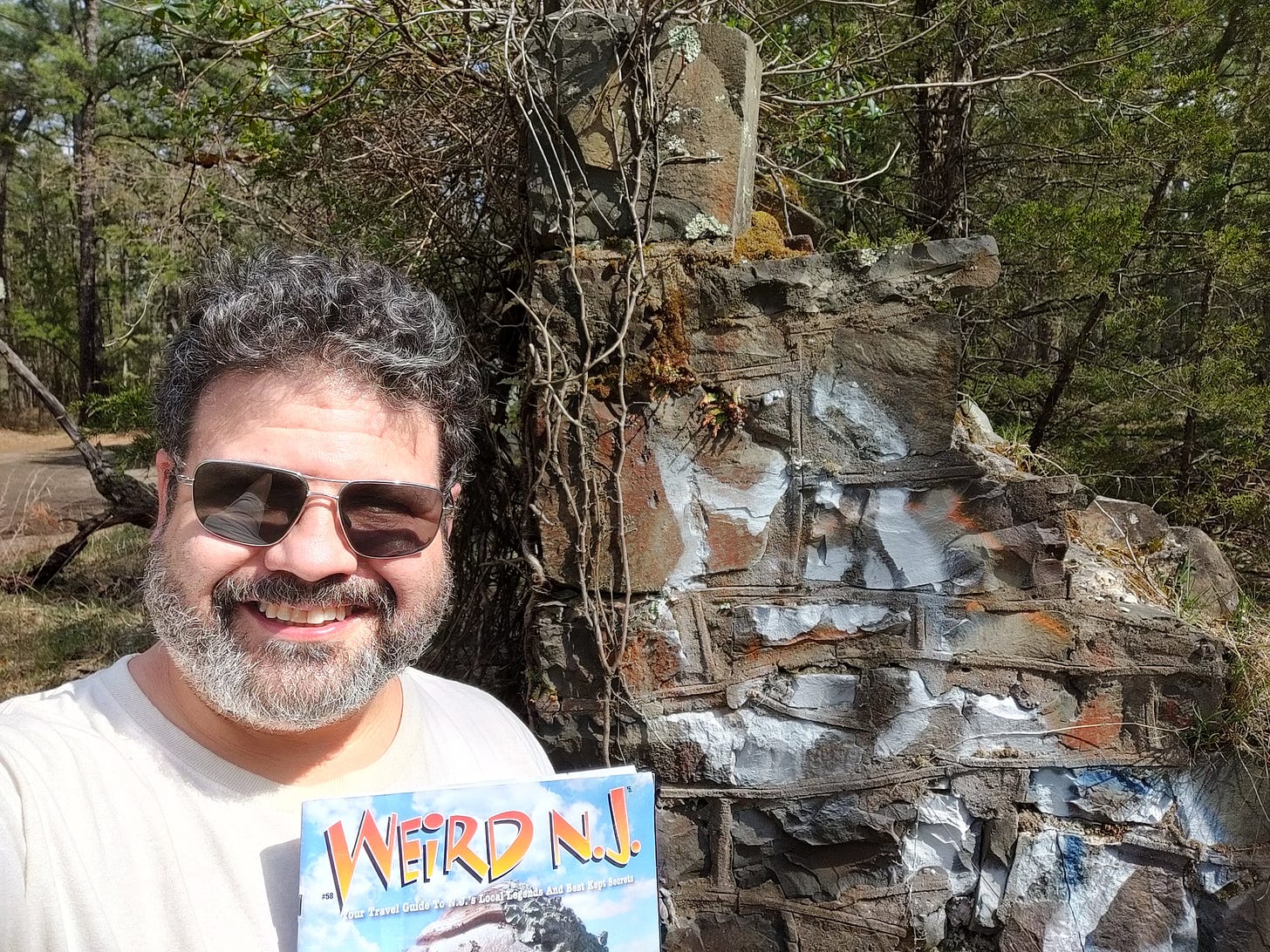
"It makes me believe we are transitioning to a post-fossil-fuel future on a widely habitable planet littered with archaeological relics of the Before Times, and not entering a slow apocalypse haunted by the mistakes of its past." What a great line. I love these travel adventures.
Nice article. I was there last year after a Pinelands Adventure trip to see a cranberry harvest. Interesting site. I too am a big fan of the Pine Barrens. It has some great stories and history. Look forward to reading some more of your articles.